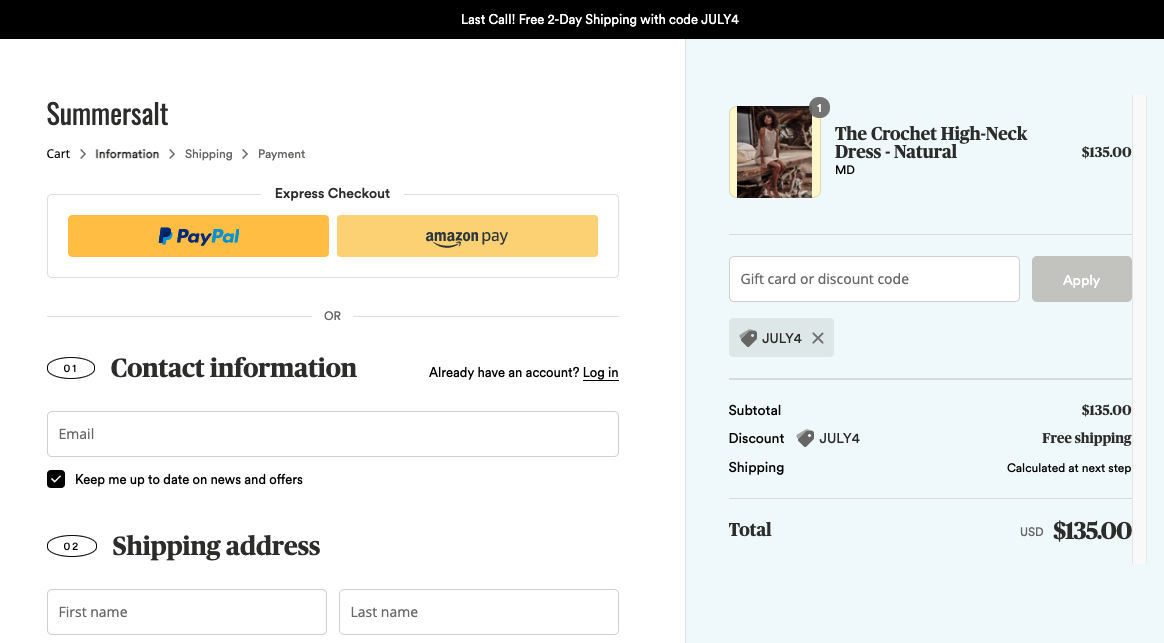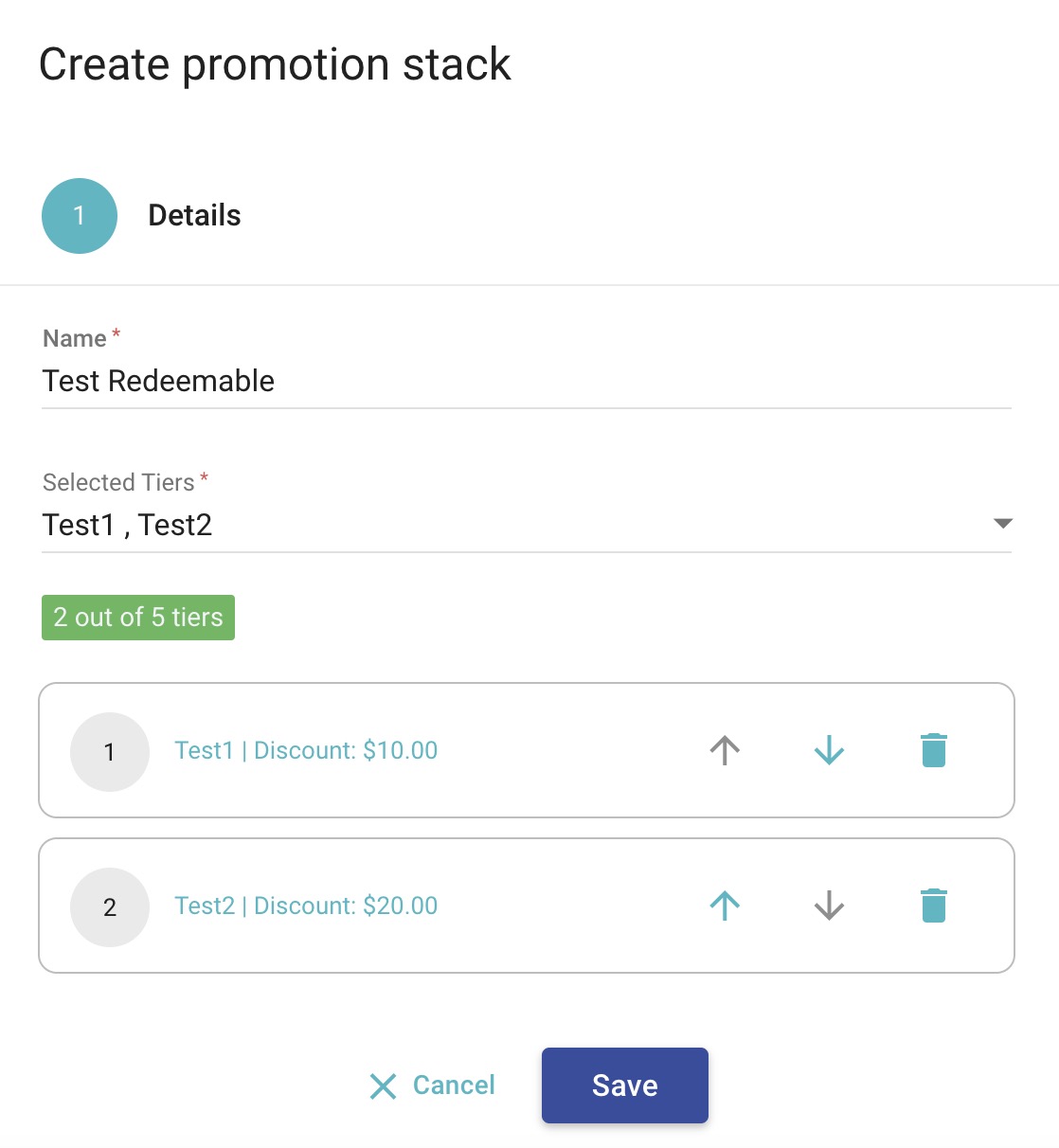Topping off Discounts: What Is Coupon Stacking and Why You Should Do It
In 2023 inflation has still not stopped making everybody's life quite miserable. Accordingly, shopping discounts and special offers are currently of great value. They make consumers especially happy if they can redeem more than one coupon at checkout while shopping. As in the words of Brian Vines "coupons are like pancakes" – one will do but a stack of them certainly is much more satisfying.
Moreover, stackable discounts are a great solution for retailers as well, because they make up for a great UX experience, nurture customer loyalty, and can be considered a vector for bringing new shoppers in.
In this post you will learn what is coupon stacking, what are pros and cons of such practice, how retailers use discount combinations in practice, and what is the best tool to enable stacking coupons.
{{EBOOK}}
{{ENDEBOOK}}
What is discount stacking?
Discount stacking (also called coupon stacking or promotion stacking) refers to the practice of combining multiple discounts or promotions by customers to maximize their savings on a purchase.
How does coupon stacking look in practice?
Let's say a retailer offers a 10% discount on particular products. If a customer has an additional coupon for 10% off a purchase, then the discounts sequentially combine. Another scenario is that a customer themselves can simply have two or more coupons and stack those discounts codes at checkout.
Naturally, when shoppers stack coupons, it becomes an effective method of saving money. However, it is important to remember that not all store coupons can be stacked together – some shop owners may have particular validation rules which make combining certain discounts impossible or limitations concerning the number of coupons that can be stacked together.
What are the benefits and drawbacks of implementing coupon stacking at your business?
Like every marketing strategy, the possibility to stack coupons have both advantages and disadvantages. Here are the potential ones:
Pros of discount stacking:
- Incentivizing customers – the way in which you present your discount offers matters too. According to the research carried out by Necati Ertekin, Jeffrey D. Shulman, and Haipeng Chen, retail shop owners that use discount combinations in practice increase their revenue. How? The consumers are better influenced by separate offers stacked together, for example: "10% off your purchase, plus an extra 15% off with a coupon" than when being offered a single discount of "30% off."
- Building up customer loyalty – this is probably the most important advantage – if a store allows shoppers to stack discounts, a sense of goodwill and loyalty is awakened among a customer base. Why would they look for something else if they have the best product discounts available within one store? No. In the end, your brand is going above and beyond to help consumers save money.
- Leveraging spending mood – the more discount opportunities people have, the more willing they are to shop and eventually spend money on products they love. Accordingly, the basket size is destined to increase and so is the revenue per customer. The sales are driven quickly when discounts are stacked together.
- Acquiring competitive advantage – by offering a unique way to stack multiple discounts together, particular brands can set themselves apart from their competitors who may not offer such deals. The possibility to create a combination of discounts will definitely make your business stand out in a marketplace that tends to be a crowded place these days.
- Facility of collecting customer data – it is no secret that when consumers use discount coupons while ordering online, retailers can collect data concerning their purchasing behavior, and more importantly their preferences. Such valuable data can then be used to improve following marketing offers so as to create tailored offers designated for particular customer segments.
Cons of discount stacking:
- Temptation to spend more – great deals undeniably incentivize shoppers to spend more money. However, they may accidentally spend more than they are able to. Such behavior may result in canceled orders or returned items if the initial purchase is not thought over by those who buy. But, this is the risk that comes with every discount campaign that you carry out.
- A time-consuming quest – discount combinations can require time and effort on the part of the customers as they may have to search for coupons or navigate through complex discount policies. They eventually may find the whole experience frustrating and quit searching for best deals. But do not give up – you can make stacking discounts a pleasurable experience for your shoppers as long as you make its rules transparent and easily accessible.
- Money loss – before allowing for discount stacking, you need to verify that you have carefully considered costs and benefits of offered discounts to ensure that you are not giving out too much profit in the process, especially if your business does not have a high profit margin to begin with. Additionally, make certain that the costs of fulfilment of the order (e.g. shipping, packaging, labor) do not exceed the revenue granted by a particular sale when coupons are combined.
What can help you carry out a successful discount stacking campaign is a right software tool ensuring that you reach the desired results and satisfy your customers. This topic will be further explored in the last section of this post.
Discount stacking in practice – how others do it?
Many brands use discount stacking as a promotional strategy to incentivize shoppers to make purchases. Here are a few examples of brands that offer the possibility to stack discounts:
1. Target
Target is an American retail chain that often offers a variety of discounts that can be stacked, such as manufacturer coupons, Target Circle offers, and Target RedCard discounts.
- There is a limit of 4 identical coupons per household, per day (unless there is a special occasion coupon that states otherwise).
- Only one manufacturer coupon (paper or digital), one Target coupon (paper or digital), and one Target Circle offer can be combined per item.
- BOGO coupons cannot be combined (for example, you cannot use two BOGO coupons on two items and get both for free).
2. Kohl's
Kohl's, a US department store retail chain, allows their shoppers to save money by allowing for stacking coupons and combining them with other discounts such as Kohl's Cash program.
At Kohl's a maximum of 4 discount codes can be combined while placing an order online. There are also other rules to coupon stacking:
- Only one sitewide %-off coupon can be used.
- Multiple department-specific $-off or %-off coupons can be used.
- Up to SIX $-off coupons (like Kohl's Cash® and Rewards) can be used.
- A free-shipping discount can be additionally applied.
3. Bath & Body Works
Bath & Body Works is an American beauty and personal care store that frequently offers coupons and promotions that can be stacked, such as buy-one-get-one-free deals and dollar-off discounts.
- The store allows using one coupon per purchase at checkout during sales (adding the coupon discount to store discount) in order to maximize customers' savings.
- There is, however, an exception to the “only one coupon” policy for Black Friday, when you can stack multiple coupons for a single in-store purchase. The cashier will apply coupons in the following order: dollars off (example: $10 off your $30 purchase), free item with purchase, percent-off (example: 15% off your entire purchase).

4. CVS
CVS is an American retail pharmacy chain where you can stack all sorts of coupons:
- Manufacturer coupons
- CVS store coupons
- ExtraBucks Promotions
- Cashback Rebates & MIR
- Extrabucks earned from previous transaction
Similarly to Target, CVS allows for the usage of one manufacturer coupon (or other type of coupon/reward) and one store coupon per item.
5. Jo-Ann Fabric and Craft Stores
A specialty retailer of crafts and fabrics based in Ohio, JoAnn Fabrics and Crafts allows their shoppers to make couponing a profitable experience and allows for generally using more than one coupons during transactions with a few exceptions:
- Two identical coupons (for example, coupons with the same barcode number) cannot be used in one transaction.
- Two or more transaction-level discounts cannot be redeemed in one transaction.
- Two coupons or discounts cannot be applied to the same item.
- As for online orders, only a single coupon can be redeemed.

How should you do discount stacking then?
All these stores implement discount stacking in order to incentivize customers to shop – both online and at their brick-and-mortar stores. When creating a coupon stacking campaign, you need to remember to make this a pleasurable journey for your consumers. In the end, even if they will have the promo codes but will have no idea how to combine them, discount stacking will not happen.
Summer Salt adds the added coupon below the coupon code field and empties the coupon code field once a coupon is applied to the order, suggesting users can apply more than one coupon per order.

Pretty Little Thing allows customers to apply just one coupon code per order. They make the coupon field disappear after the coupon is applied to the order and replace it with a “change code” button.

Accordingly, make the rules of discount stacking visible on your website or send those via emails in which you include coupons anyways. This will make your customers happy as they will be able to maximize their savings on the items that they love. Surely, using a promotion software will guarantee some of the best experience both for you and your customers.
How does Voucherify support discount stacking?
Voucherify is an API-first headless promotion engine which allows you for creating complex marketing campaigns, including discount stacking.
Before, it was impossible to include multiple incentives within a single call. Accordingly, promotion stacking was limited. One workaround was to send several redeemables in separate API calls but this meant more work for developers, longer response times, and ultimately higher subscription costs; therefore, we found an answer to your needs and introduced a new redemption endpoint.
Consequently, now, with the help of our software, you can stack up to 5 objects (redeemables) in a single API request including:
- Coupon codes
- Gift cards
- Promotion tiers
- Loyalty cards (pay with points reward and pay for the order using loyalty credits)
- Referral codes
And add an additional 1 promotion stack with 5 tiers included.
You decide which discounts your customers will be able to combine together in order to make shopping with your brand an excellent experience. If you use the new endpoint and enable stacking at checkout within a single call, then your customers will be able to use up to five different incentives during a solo transaction and you can manage it all with a single API call instead of five.
On top of having a stacking API, which allows for redeeming multiple single codes at the same time, Voucherify also supports cart promotion tier stack – it enables grouping tiers into stacks and operating on both stacks and tiers when redeeming a promotion.
If you want to group tiers into stacks, here is how to do with Voucherify it in three simple steps:
- Choose Tiers and stacks when selecting discount application rules. Thanks to stacking, you can validate and redeem stacked tiers as one object. It means that Voucherify can validate and apply multiple discounts grouped together at once.

- Choose Create stack to group promotion tiers. First, name the stack and select the tiers to include in the stack.

- You will see a list of all included tiers. Using arrows, you can change the hierarchy of the promotion levels within the stack.

Note: The hierarchy of tiers within the stack determines the sequence of tier redemptions during a single order transaction.
{{CTA}}
Are you ready to enable discount stacking for your brand?
{{ENDCTA}}









.jpeg)

.jpeg)

